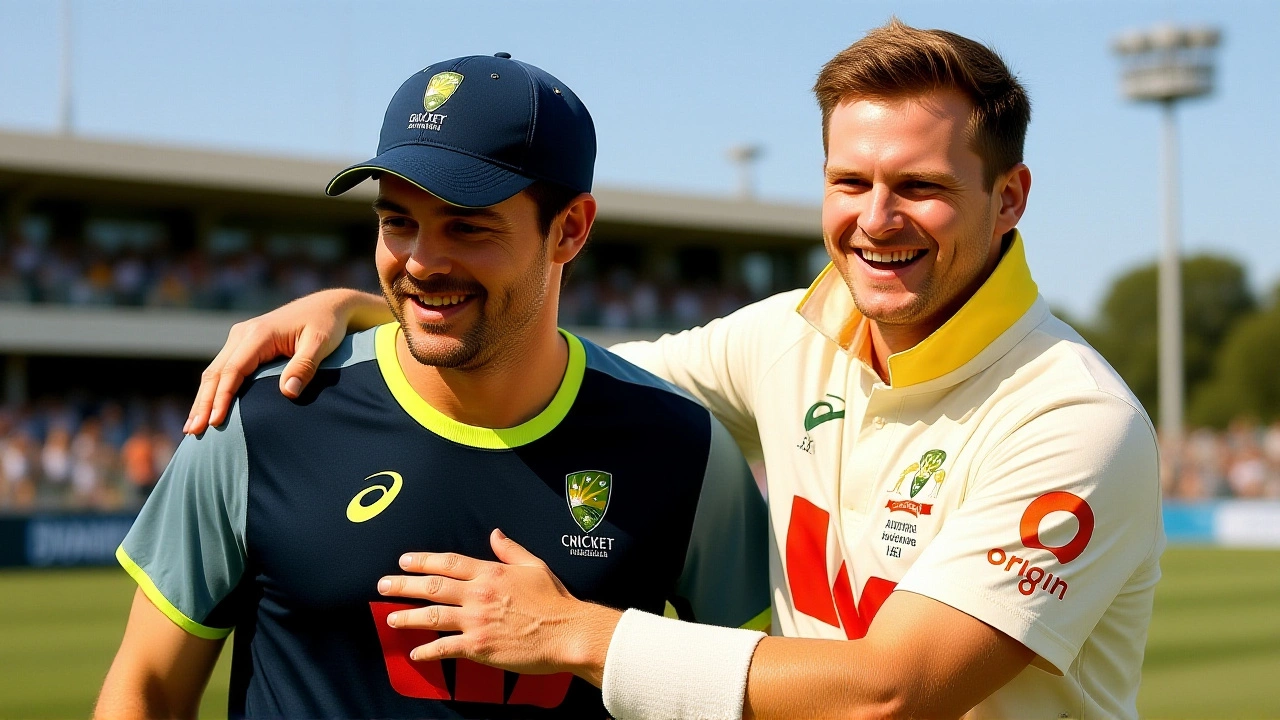Travis Head's 123 off 69 balls turns Ashes opener on its head in Perth

When Travis Head stepped onto the pitch at Perth Stadium on Saturday, November 25, 2023, Australia was in freefall. England had dominated for 1.5 days on a pitch that had swallowed batsmen whole — only 30 wickets had fallen, and the highest score in the match was 52. Then, with the target at 205 and the innings barely 20 overs old, Head — a 30-year-old left-hander with a mustache and a reputation for calm under pressure — took a deep breath and decided to go nuclear. What followed wasn’t just a century. It was a demolition job. 123 runs off 69 balls. 16 boundaries. Four sixes. And a game turned inside out in just over two hours.
From Desperation to Domination
Head wasn’t even supposed to be there. Usman Khawaja, Australia’s regular opener, was ruled out with a hamstring injury just hours before the chase began. Captain Steven Bernard Smith, 34, didn’t hesitate. "Travis was like, 'I want to do it.' So I was like: 'Mate, go for your life!'", Smith later said. And go for his life he did. The pitch, notorious for its uneven bounce and unpredictable seam movement, had made even the best batsmen look ordinary. England’s five-man pace attack — led by Ben Stokes — had taken 30 wickets in the first 1.5 days. They were smelling blood. Then Head walked out.He didn’t just survive. He attacked. Hooks over fine leg. Ramps over slips. Crunching drives off Stokes that cleared the rope. One over, he took four boundaries. Another, he launched a six off a bouncer that looked like it was aimed at his ribs. "I thought that was the right process," Head said afterward. "Right way of thinking. Go out there and see what happens. And it’s worked today." He didn’t celebrate when he reached his century. He just nodded, as if to say, "Yeah, that’s what I meant to do."
England’s Collapse in Slow Motion
England had built their entire strategy on wearing down Australia’s batting lineup. They bowled short, they bowled wide, they bowled with aggression — and for two days, it worked. But Head didn’t just adapt. He weaponized the conditions. His uppercut for six, caught on replay by cricket.com.au, became an instant viral moment. Commentary described it as "seeing this like a football," a reference to the way he timed the ball with such precision it looked effortless. By the time Head was caught at deep midwicket — with just 13 runs needed — England’s bowlers looked exhausted, confused, and utterly spent. Their captain, Ben Stokes, later admitted: "We didn’t have an answer. He just played shots we didn’t even know existed."The result? Australia won by eight wickets with more than 10 overs to spare. It was the fastest completed test match in Perth Stadium history — and one of the quickest in Ashes history. The match, which was expected to last five days, ended in just two. And with it, England’s momentum vanished.

The Ashes: A Rivalry That Refuses to Fade
The the Ashes series isn’t just cricket. It’s history. Dating back to 1882, it’s the oldest rivalry in international sport. Cricket Australia and the England and Wales Cricket Board have met 73 times in the series. Australia has won 34, England 32, and seven have ended in draws. The urn itself — a tiny, fragile trophy — carries more emotional weight than any trophy in the game. Australia currently holds it, having won the 2021-22 series at home. This win in Perth gives them a 1-0 lead in the 2023-24 series, and they haven’t lost an Ashes series at home since 2017-18.For Cricket Australia, CEO Nick Hockley and his team, this was more than a victory — it was a statement. After a slow start to the 2023-24 season, this performance reasserted Australia’s dominance on home soil. For the England and Wales Cricket Board, led by CEO Richard Thompson, it’s a wake-up call. Their pace attack, so fearsome in the first two days, looked like a spent force by the end.

What Comes Next? Adelaide Awaits
The second test begins on December 1, 2023, at the Adelaide Oval — a ground known for its balanced pitch and high-scoring games. Australia will look to extend their lead, while England must find a way to counter Head’s aggression — and fast. Will they adjust their bowling plans? Bring in a spinner? Change their field placements? The pressure is now squarely on England’s shoulders.Head’s innings didn’t just win a test. It shifted the narrative. Before Saturday, the story was about England’s dominance. After? It’s about Australia’s fearless heart. And in the Ashes, that’s often all you need.
Frequently Asked Questions
How did Travis Head’s innings compare to other Ashes centuries?
Head’s 123 off 69 balls is the fastest century by an Australian in the Ashes since 1998, and the second-fastest overall in Ashes history. Only Michael Clarke’s 118 off 68 balls in 2013 was quicker. In terms of strike rate on a hostile pitch, it’s arguably the most extraordinary — no other Ashes century has come off fewer than 80 balls on a pitch where the previous highest score was 52.
Why was the Perth pitch so difficult before Head’s innings?
The Perth Stadium pitch had unusually high bounce and erratic seam movement, exacerbated by dry conditions and a lack of moisture. In the first 1.5 days, only 30 wickets fell — unusually low for such a surface — but each one came at a cost. Batsmen were getting beaten regularly, and even the best struggled to find timing. Head was the first to treat it as an opportunity rather than a threat.
What impact does this win have on Australia’s chances of retaining the Ashes?
Australia needs to win two of the five tests to retain the urn, which they currently hold. With a 1-0 lead and the next two matches in Adelaide and Melbourne — both traditionally batting-friendly — their path to retention is significantly easier. England now needs to win at least three of the remaining four tests, a tall order after this psychological blow.
Has anyone else ever turned a match around like this in the Ashes?
Yes — but rarely under such extreme conditions. In 2005, Kevin Pietersen’s 158 at The Oval helped England win the series, but that was after a long chase on a flat pitch. Head’s innings stands out because it came on a pitch that had been described as "unplayable" by both teams’ captains. His aggression under such pressure is unprecedented in modern Ashes history.
What’s the significance of Head’s 10th test century?
Head became the 12th Australian to reach 10 test centuries, joining legends like Steve Waugh, Ricky Ponting, and David Warner. But unlike most, he achieved it in his 61st test — slower than most elite batters — making this innings his most consequential. It’s not just a milestone; it’s a career-defining moment that may finally silence critics who questioned his consistency.
What’s next for the Ashes series?
After Adelaide, the series moves to Melbourne (December 14), Sydney (January 4), and the Gabba in Brisbane (January 18). Australia’s momentum is building, but England still has time. If they lose in Adelaide, the pressure will become overwhelming. If they win? The series could still swing — but they’ll need to rediscover their discipline and patience, which vanished in Perth.




